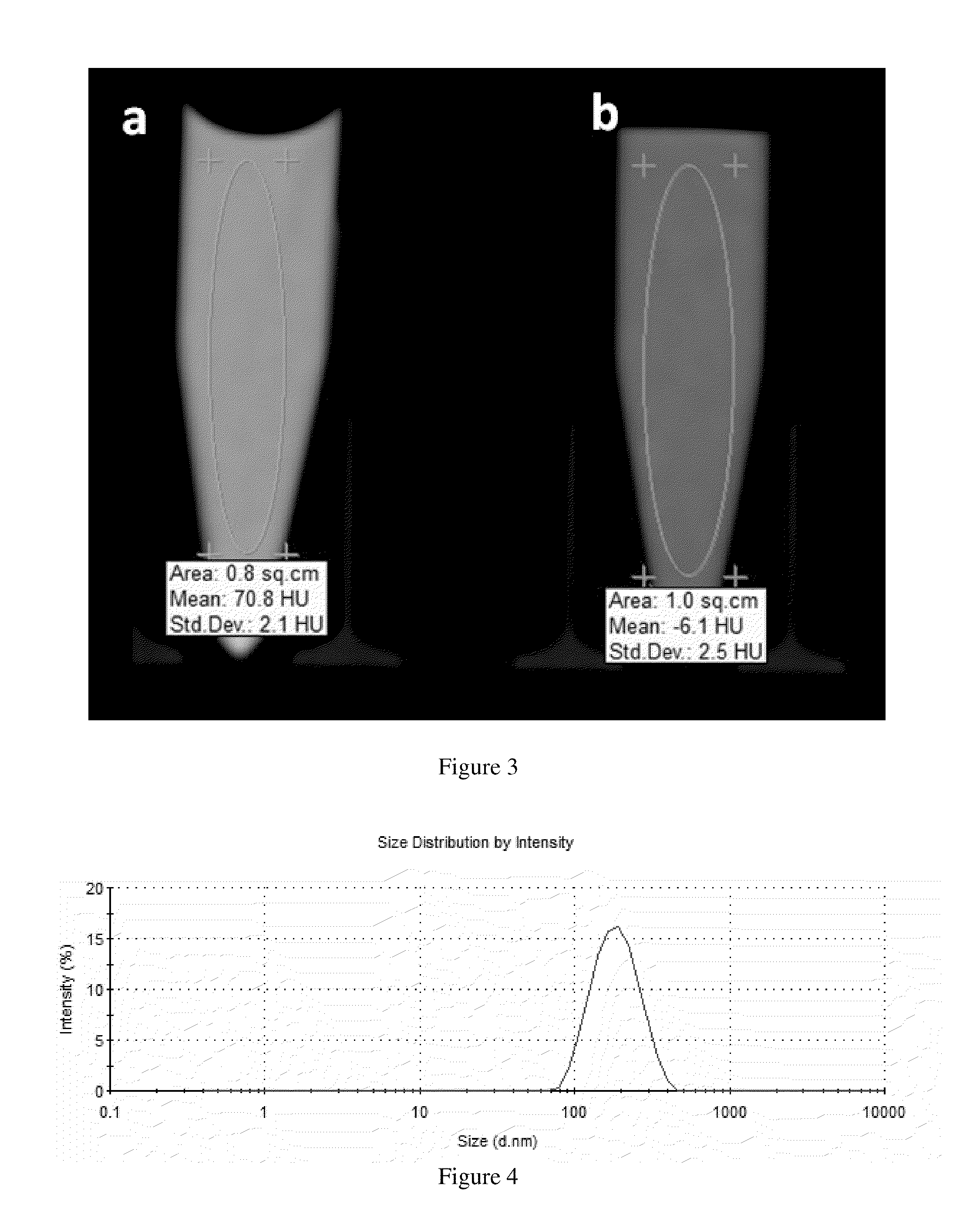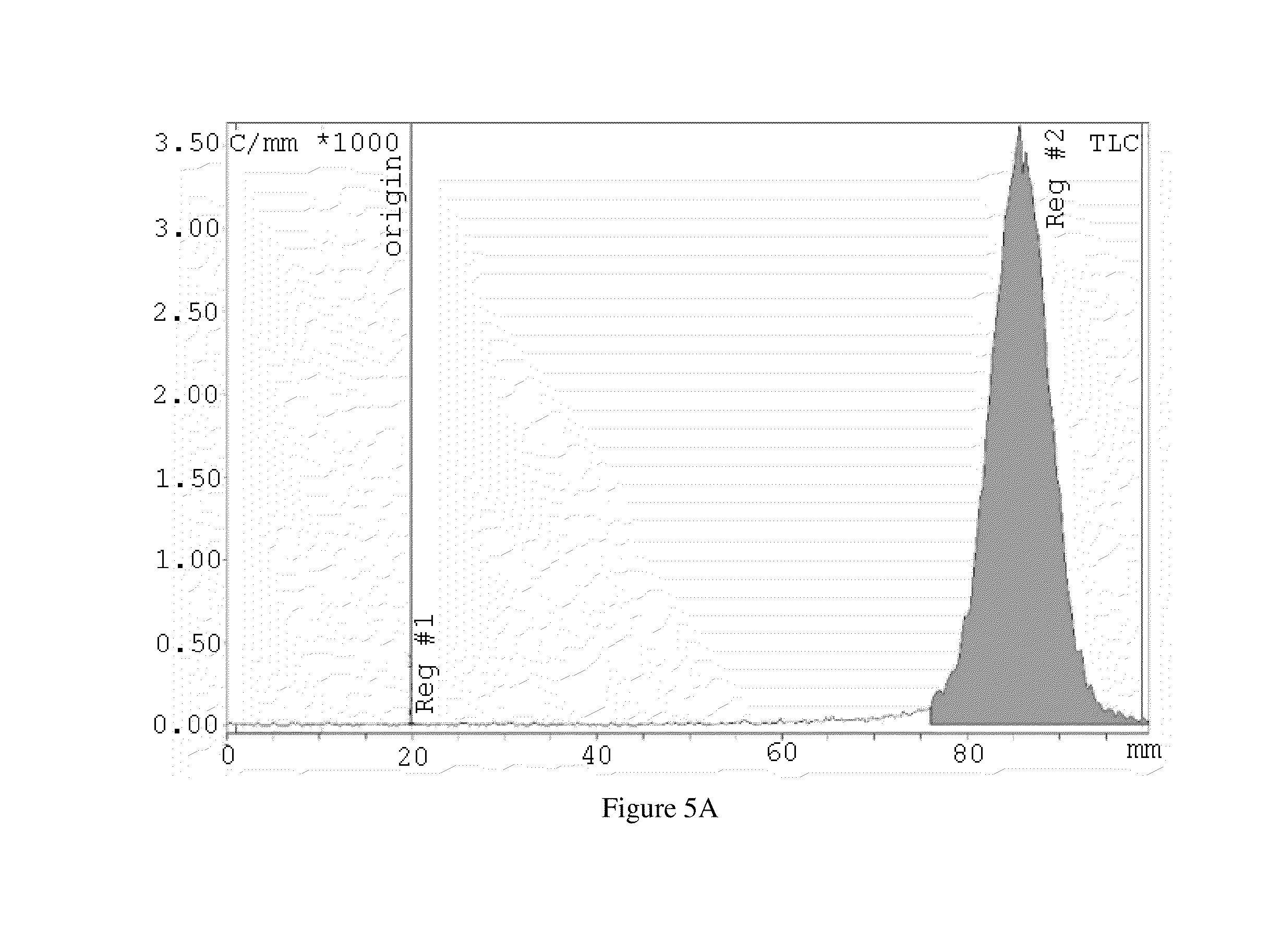Tumorspecific SPECT/MR(T1), SPECT/MR(T2) and SPECT/CT contrast agents
- Summary
- Abstract
- Description
- Claims
- Application Information
AI Technical Summary
Benefits of technology
Problems solved by technology
Method used
Image
Examples
example 1
Preparation of Folated Poly-Gamma-Glutamic Acid (γ-PGA)
[0084]Folic acid was conjugated via the amino groups to γ-PGA using carbodiimide technique. γ-PGA (m=60 mg) was dissolved in water (V=100 ml) to produce aqueous solution. The pH of the polymer solution was adjusted to 6.0. After the dropwise addition of cold water-soluble 1-[3-(dimethylamino)propyl]-3-ethylcarbodiimide methiodide (CDI) (m=13 mg in 2 ml distilled water) to the γ-PGA aqueous solution, the reaction mixture was stirred at 4° C. for 1 h, then at room temperature for 1 h. After that, folic acid (m=22 mg in dimethyl sulfoxide, V=10 ml) was added droppwise to the reaction mixture and stirred 4° C. for 1 h, then at room temperature for 24 h. The folated poly-γ-glutamic acid (γ-PGA-FA) was purified by dialysis.
example 2
Preparation of Folated Poly-Gamma-Glutamic Acid
[0085]Synthesis of folated PGA was performed in a two steps process. First PEG amine was coupled to FA based on a well-known reaction describe elsewhere. JACS, 130 (2008) 114671 After that FA-PEG amine was conjugated via the amino groups to PGA using carbodiimide technique: γ-PGA (m=300 mg) was dissolved in water (V=300 ml) to produce aqueous solution at a concentration of 1 mg / ml. The pH of the polymer solution was adjusted to 6.0. After addition of 1-hydroxybenzotriazole hydrate (m=94 mg), the reaction mixture was sonicated for 5 min The reaction mixture was cooled to 4° C. and cold water-soluble 1[3-(dimethylamino)propyl]-3-ethylcarbodiimide hydrochloride (EDC) (m=445 mg in V=15 ml water) was added dropwise to the γ-PGA aqueous solution. The reaction mixture was stirred at 4° C. for 10 min, then folic acid-PEG-amine solution (m=100 mg in V=15 ml water) and triethylamine (V=324 μl) were added dropwise to the reaction mixture. The reac...
example 3
Preparation of Folated Poly-Gamma-Glutamic Acid Coated Gold Nanoparticles
[0086]Folated PGA was dissolved in distilled water (V=10 ml) to produce a solution with a concentration of c=0.5 mg / ml. After the dropwise addition of solution of gold (III) chloride hydrate (V=500 μl, c=1.7 mg / ml), solution of sodium citrate tribasic dihydrate (V=75 μl, c=10 mg / ml) was added dropwise to the reaction mixture. Then solution of sodium borohydride (V=40 μl, c=1 mg / ml) was added to the reaction. The reaction mixture was stirred at room temperature for 4 h, after that it was purified by dialysis. (FIG. 1)
PUM
 Login to View More
Login to View More Abstract
Description
Claims
Application Information
 Login to View More
Login to View More - R&D
- Intellectual Property
- Life Sciences
- Materials
- Tech Scout
- Unparalleled Data Quality
- Higher Quality Content
- 60% Fewer Hallucinations
Browse by: Latest US Patents, China's latest patents, Technical Efficacy Thesaurus, Application Domain, Technology Topic, Popular Technical Reports.
© 2025 PatSnap. All rights reserved.Legal|Privacy policy|Modern Slavery Act Transparency Statement|Sitemap|About US| Contact US: help@patsnap.com



